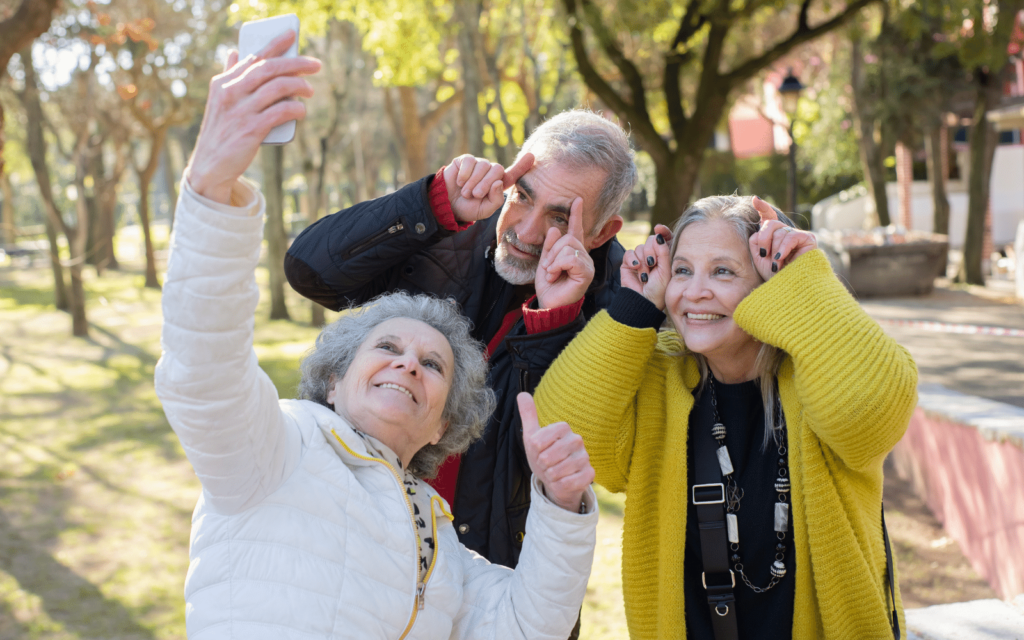Ageism refers to the stereotypes (how we think), prejudice (how we feel) and discrimination (how we act) we might hold towards others or ourselves based on age.
Ageism is a unique form of discrimination, given that it’s universal — it’s often referred to as the last acceptable form of discrimination. Ageism often intersects with other forms of discrimination, including sexism, racism and ableism.
When it comes to the development and distribution of technology, ageism has important implications. It not only shapes whether new technologies are adopted by older adults, but it also influences how new technologies are developed and marketed.
In recent years, there has been increasing awareness of how digital technologies and platforms can discriminate on the bases of gender, race and class. However, ageism has received less attention.
Artificial intelligence, health-care technologies, and monitoring and surveillance systems, among others, are increasingly being integrated into the lives of older people.

Technologies play vital roles in everyday life, and it is important to investigate how older people’s uses of technology are influenced by ageism, self-perception and identity.
As a social gerontologist interested in ageism (Stephanie Hatzifilalithis), my questions are threefold: 1) Why don’t we do our best to create technologies that are based on principles of universal design? 2) How does ageism affect technology, and vice versa? and 3) Why aren’t we listening to older people when designing tech for their use?
People like us
In a 2017 episode of the Netflix show Grace and Frankie, the protagonists (played by Jane Fonda, now 84 and Lily Tomlin, 83), decide to revolutionize the vibrator market to “create products for people like us.”
After Grace suffers an arthritis flare-up caused by using a sex toy, the friends design a vibrator that conforms to principles of universal design. Grace and Frankie then try to pitch their product, with little luck.
Good vibes. New Season March 24 on @Netflix. pic.twitter.com/Pvb2AeSjuq
— Grace and Frankie (@GraceandFrankie) March 13, 2017
While Grace and Frankie are forces to be reckoned with, they are fictional characters. In the real world, workers at the biggest tech companies are overwhelmingly young, white and male.
In my postdoctoral work with social and critical gerontologist Nicole Dalmer, we study how ageism is both produced and reproduced in the context of experience and design. We look at how older people think about, talk about and experience the technologies (and their related data) that play a role in their lives.
We are also interested in how those who are involved in the design and development of technologies understand the potential effects of ageism.
Read More: ‘Phubbing’: snubbing your loved ones for your phone can do more damage than you realise
Involving older people
Our work is part of a growing movement towards the importance and appreciation of person-centered, participatory and visual design and research methods. Other researchers have suggested a framework to guide co-designing technology with older people.
Co-design is a well-established design approach that isn’t widely used yet among older people. It is an important aspect of our current research to ensure that our project is informed, directed and influenced by older people, and that the project’s outcomes are meaningfully aligned with their needs, experiences and expertise.
By focusing on both designers and older-adult end-users, we hope that our research will highlight best practices in the development of technologies that support independent living and enhance social participation in later life in a meaningful way.
This will not only help to avoid costly barriers to technology adoption, but will help alleviate the increasing challenges of technologically related discrimination, exclusion, and inclusion that both explicitly and implicitly colour and shape experiences of aging.
Researchers, designers and technology developers need to take the initiative and spend time to think through personal biased related to age-based stereotypes to design tech with older people.
- is a Postdoctoral Fellow, McMaster Institute for Research on Aging, McMaster University
- is an Assistant Professor in the Department of Health, Aging and Society, McMaster University
- This article first appeared on The Conversation
